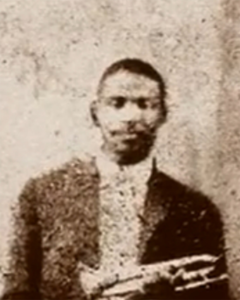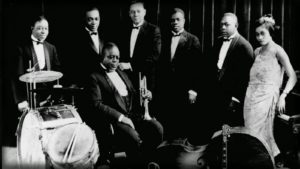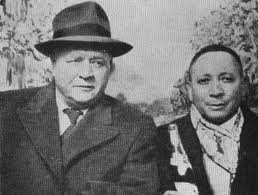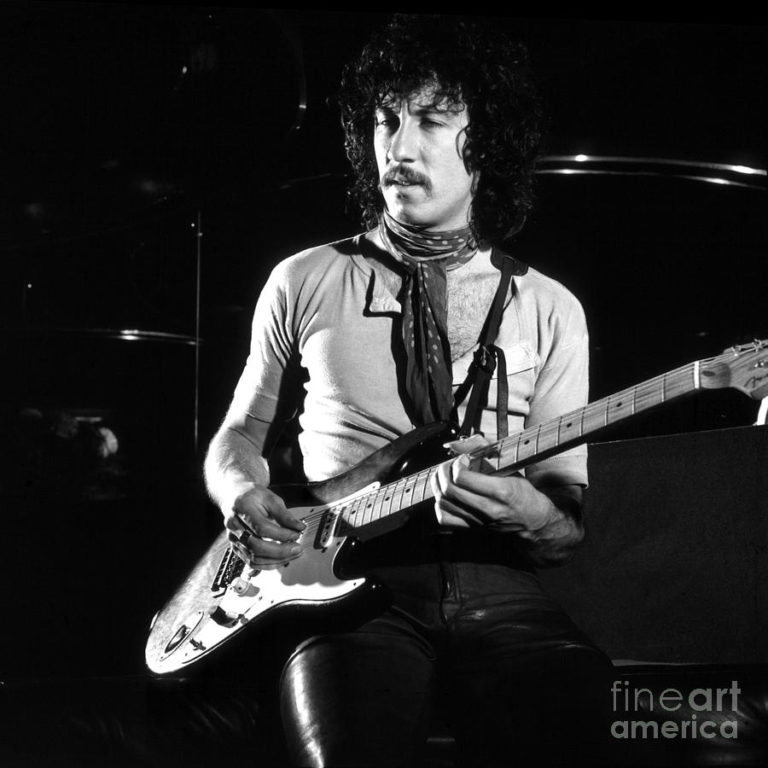ROCK ‘N’ ROLL’S FORGOTTEN FATHER.
REMEMBERING LESTER MELROSE: 1891 – 1968. THE FIRST FATHER OF CHICAGO BLUES.
Move over Sam Phillips. Not only is Chicago’s Lester Melrose a serious contender for the title ‘Father of Rock ‘n’ Roll’ but he’s the only one I’ve heard of who links the birth of blues in the 19th century with the true birth of rock & roll in the 1930s and 1940s.
Putting aside the various streams that led to blues, only named in 1912, New Orleans’ gut-bucket blues of the late 1890s was the music that, more than any other, kicked off the genre that’s today called blues.

Gut-bucket blues, which came out of ragtime, was pioneered by the original rock & roll bad boy, Buddy Bolden. And in case you’re wondering why I spell rock ‘n’ roll two different ways, let me explain. Rock ‘n’ roll was the music of the 1950s and early 1960s. Rock & roll with the ampersand is the term originating with the Stones and other rock bands in the 1970s, when bad boys started to appear, Brian Jones and Keith Moon, for example.
Buddy Bolden, the original rock star, reigned supreme as the undisputed king of black New Orleans music from around 1898 until 1906. Says America’s National Park Service’s ‘A New Orleans Jazz History’ website:
“Buddy Bolden played the cornet (an instrument similar to the trumpet) like no one before him. He stirred his dancers into a frenzy. Some simply shouted out, ‘Aw, play it, King Bolden!’ Bolden led a band during this time that is generally considered the first group to play what would later be called jazz music. He forged his reputation with the power of his horn, said to be heard miles away, and his proficiency playing the blues. Musicians who were old enough to have heard Bolden perform described his band as playing a whole lot of blues.”
Buddy Bolden’s cornet, improvising over his hot band one night in the mid-to-late 1890s, to me pinpoints that magic moment ragtime morphed into the brassy blues New Orleans later became famous for.
Fabled for his way with women and enormous capacity for drink, Buddy was one of the first musicians known to have burnt themselves out due to what’s now called the rock & roll lifestyle. His alcohol abuse, womanising and wild behaviour was legendary. His rich singing voice was said to stir up the girls in the audience, ‘giving them the crawls’. Called Kid Bolden in his prodigious youth, Buddy was also one of the first musicians known to go into a trance when playing solos.
Kid Bolden, born in 1877, soon became King Bolden. And, as every New Orleans musician of note maintained, Buddy Bolden was the main man when it came to developing hot New Orleans blues, the sound that later became jazz.
Things all fell apart for Buddy around 1906. Leading his band in a New Orleans parade, Bolden flipped out and ran screaming from the procession. Some say he thought his cornet was trying to kill him. Aged just 29, Buddy Bolden was committed to an insane asylum in 1907 where he died in 1931, unheralded and unrecorded, locked away for 24 long years.
Bolden’s disciples were many, including trumpet and cornet legends, Joe ‘King’ Oliver, and Joe’s band member and protégé, Louis Armstrong. Now, here’s where Lester Melrose’s link directly back to Buddy Bolden comes in. King Oliver was a contemporary of Buddy Bolden and one of the first to play the hot blues of early New Orleans. And it was with King Oliver, with Louis Armstrong in his band, that Lester Melrose cut his producing and recording teeth, with ‘Dipper Mouth Blues’ in Chicago in 1923.

Melrose, a white blues fanatic from rural Illinois who served in France in WW1, also produced and recorded hits for another blues and jazz legend, Jelly Roll Morton. Indeed, Melrose once employed Jelly Roll in his music publishing business as chief songwriter.
In 1928, Lester Melrose produced a massive hit record, selling millions and being covered by many blues stars of the day. This was a suggestive hokum blues entitled ‘It’s Tight Like That’, by Tampa Red and Georgia Tom Dorsey. Through the 1920s and 1930s, Melrose initiated innovative assembly-line recording techniques and became the first producer to use the same session players to back his different artists.
The unique sound Lester created during this, the original Chicago blues era, became famous as the Melrose Sound, a forerunner to later distinctive session sounds like the Motown Sound in Detroit or Alabama’s Muscle Shoals Sound.

With Big Bill Broonzy and Tampa Red as his right and left-hand man, blues artists who Melrose discovered, produced and promoted during the 1920s and 1930s included Big Bill and Tampa in spades, Leroy Carr, Arthur ‘Big Boy’ Cradup, Champion Jack Dupree, Georgia Tom, Lonnie Johnson, Tommy McClennan, Memphis Slim, Memphis Minnie, Roosevelt Sykes, Washboard Sam, the original Sonny Boy Williamson, Bukka White and Jazz Gillum.

Lester Melrose was also the first to record the 16-year-old white electric guitar prodigy and electric blues pioneer, George Barnes. Indeed, young George backed many of those seminal black blues artists above and almost certainly became only the second electric blues guitarist on record, after Eddie Durham, when he backed Big Bill Broonzy on, ‘It’s a Lowdown Dirty Shame’ in March 1938.
Also in 1938, Lester Melrose recorded and produced what I consider the second earliest rock ‘n’ roll record of all time, second only to Albert Ammons’ 1936 piano classic, ‘Boogie Woogie Stomp’.
This early rock ‘n’ roll track, ‘Truckin’ Little Woman’, was by Broonzy, recording as Big Bill and his Memphis Five, although Big Bill wasn’t exactly known for spending any time in Memphis, it must be noted. The rocking blues was recorded by Melrose in Chicago, in March 1938, with a trumpet taking the solo instead of the now traditional electric lead guitar. Take a listen.
In 1939, Lester Melrose found blues singer/guitarist, Arthur Big Boy Crudup, living in a packing crate in Chicago and signed him to the Bluebird label. Crudup is most famous for writing race classics that later became legendary rock & roll songs. His ‘That’s All Right’, written in 1946, and ‘My Baby left Me’, both originally produced by Melrose in Chicago, became world-famous after being covered by Elvis Presley in the 1950s.
To find out more about the amazing evolution of the blues, check ‘America’s Gift’, my big blues paperback at goo.gl/At5AZe; my eBooks ‘How Blues Evolved Volumes One & Two’ at Amazon or my blues videos at goo.gl/UQ8id8







The detailed info on King Bolden really got me to thinking….. He was known for his ‘drinking, womanizing and carrying on…’ – Well this likely could have included cocaine, which was prevalent in the black music community at the time.
Some people have a high sensitivity to the effects of cocaine. This could be were they may not do so much as to garner serious notice – yet they feel a strong high, have a strong counter effect to the stupor from excessive drinking…AND can experience experience induced psychosis. I had a friend whose brother went through a similar thing (much less on the booze, and no musical talent), and he eventually experienced pretty classic schizophrenia. This became semi-permanent, even when he had short periods of abstinence from cocaine. He was treated with Abilify and responded well to it. He also eventually returned to a (mostly) normal mental condition.
It would be really interesting to see someone research the records at the institution he was held at for 24 years. A whole lot could have been possible in those places too.
Didn’t someone write a book on Bolden? Maybe some of this is answered there